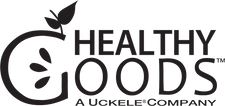Even if you don't suspect your body has much inflammation happening internally, it probably does -- unfortunately! Inflammation is the amount of stress in a person's body that will sooner or later cause a genetic weakness to show itself.
What Causes All This Bad Inflammation?
#1: A person's response to stress and how effectively they recover from the stress can drive inflammation.
#2: If the body has any toxins accumulated, they cause a lot of inflammation.
#3: Most people are sensitive to sugar, which causes insulin and cortisol to be released too frequently. These are both very powerful & important hormones, but when they're released more often than they should be, they cause inflammation.
Luckily, there are many natural, nutrition-related remedies, and here are some of our favorites.
Turmeric
Turmeric is a bright, yellow-orange colored powder, which you may have eaten in a curry dish. Turmeric contains a very powerful substance called curcumin, which is responsible for all the benefits given to our body (1).
How can you get more turmeric into your diet? Of course, you can simply enjoy more curried dishes, and these days, turmeric tea is popular...this Golden Turmeric Tea is a yummy recipe to try. Mixing up a drink made from turmeric is also possible, like this one by Sotru Fermented Turmeric & Ginger Drink Mix. Both turmeric and curcumin are also available in supplement form.
Boswellia
The resin from the bark of the boswellia tree contains special properties used for thousands of years in Ayurvedic medicine. How does boswellia serrata work? It inhibits leukotrienes, which are pro-inflammatory in the body (2).
Ginger
It turns out ginger works similarly to curcumin; however, ginger affects the body in different ways. Another cool thing is the two don’t duplicate each other’s benefits, but in fact compliment them.
Pineapple
Pineapple contains an enzyme called bromelain, which supports healthy joints, particularly when used in combination with trypsin and rutin.
How does bromelain do this? It's quite complex. Here it goes: bromelain increases serum fibrinolytic activity, reducing plasma fibrinogen levels and decreasing bradykinin levels (which results in reduced vascular permeability) by decreasing levels of PGE2 and thromboxane A2 (TXA2) (5). Check out this tropical pineapple kale smoothie. Yum!
Tart Cherries
Anthocyanins are antioxidants that give fruits, leaves, flowers, stems and roots their rich and deep red, purple and blue color. Anthocyanins in both sweet (ie: Bing) and sour cherries have been found to inhibit enzymes involved in the creation of pain sensations in the body.
Tart cherry juice, in particular, is extremely high in anthocyanins and flavonoids, which makes it so effective for supporting a healthy response to inflammation with intense exercise. All cherries contain anthocyanins and flavonoids, but tart cherries have much higher amounts (3).
Incorporating tart cherries as a concentrate, dried, fresh, frozen or liquid -- it doesn’t matter. If you want to try tart cherries in a smoothie, this Cherry Almond Smoothie is awesome!
In Health and Happiness,
Kelly Harrington, MS, RDN
Registered Dietitian Nutritionist for Healthy Goods
References:
1. Arora RB, Basu N, Kapoor V, Jain AP. Anti-inflammatory studies on Curcuma longa (turmeric). Ind J Med Res 1971;59:1289–95.
2. National Products Foundation: Boswellia.
3. Mulabagal V, Lang GA, Dewitt DL, Dalavoy SS, Nair MG. Anthocyanin content, Lipid Peroxidation and Cyclooxygenase Enzyme Inhibitory Activities of Sweet and Sour Cherries. J Agric Food Chem. 2009 Jan 30.

